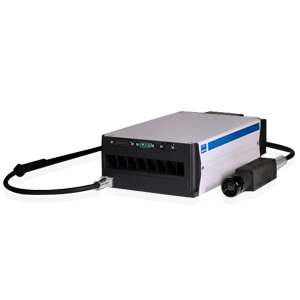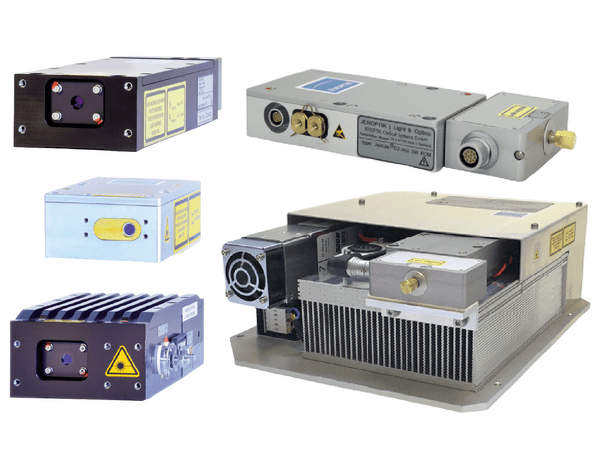Jenlas Fiber ns
Fiber Laser, ns Pulsed, 1085 nm, up to 100 W, up to 1.1 mJ, up to 200 kHz
Key Features:
- Rugged & industry-proven
- Back reflection protection
- Designed for industrial use
- Complete control by software, hardwired, or mixed
- Variable rep. rate & pulse width
- On-axis guiding laser
- Air or water cooling
- Optional add-on optical components
Get help selecting the right configuration for you!
If you do not see exactly what you need, please contact us!
The JenLas Fiber ns series is a versatile line of fiber lasers designed for OEM integrators, researchers, and applications specialists working with material processing applications. Available in 20, 30, 55, and 100W power configurations, this air-cooled laser series boasts reliable, industry-tested fiber laser technology and an adjustable pulse length. With pulse duration settings ranging from 50 to 200 nanoseconds and peak pulse powers of up to 8kW, this series offers improved performance and extended control capabilities, allowing for pulse repetition rates and pulse lengths to be changed by choosing different modes. The JenLas Fiber ns series is available with a complete set of customizable accessories, including laser controllers, beam expanders, and more.
Your Fiber Laser Solution Awaits!
Fiber Laser Examples
If you do not see exactly what you are looking for, let us know what you need!
| Output power (W) | Peak power (kW) | Pulse energy (mJ) | Pulse width (ns) FWHM / 20% | Repetition rate (kHz) | Datasheet |
| 25 | 5.7 | 0.7 | 125 / 50-200 | 30-80 | Fiber ns 25 |
| 35 | 8.5 | 1 | 125 / 50-200 | 30-80 | Fiber ns 35 |
| 55 | 8.5 | 1.1 | 125 / 50-200 | 50-100 | Fiber ns 55 |
| 105 | 7 | 1 | 125 / 50-200 | 100-200 | Fiber ns 105 |
Let us help choose the right configuration for YOU!
Benefits:
- Versatile and Scalable with Improved Performance & Control:
- Available in 20, 30, 55, and 100W power configurations
- Variable pulse width and repetition rate provides application versatility
- Wide range of customizable accessories is available for optical beam guidance systems
- Certified add-on modules allow for safe operation in accordance with industry standards.
- Ease of Integration & Industrial Reliability:
- The air-cooled design and standard, built-in optical isolators ensure ease of integration and reliable performance
- Reliable, industry-tested fiber laser technology, making it a rugged and reliable solution for your laser needs
- Precision Material Processing & Application Support:
- Suitable for labeling, marking, and cutting different materials, as well as for structuring your surface exactly
- Precisely laser markings onto metal or plastic surfaces, while also adeptly removing ultra-thin layers of material
- Feasibility studies & assistance with integration are available in our laser application lab, providing you with the support you need to get the most out of your product
With pulse duration settings ranging from 50 to 200 nanoseconds and peak pulse powers of up to 8kW, this series offers improved performance and extended control capabilities. The air-cooled design and standard, built-in optical isolators ensure ease of integration and reliable performance, while a wide range of customizable accessories is available for optical beam guidance systems. Certified add-on modules allow for safe operation in accordance with industry standards, and feasibility studies and assistance with integration are available in our laser application lab. The JenLas Fiber ns series is the ideal choice for those seeking a versatile and reliable fiber laser solution.
Don’t hesitate to ask us anything!
| Wavelength (nm) | |
|---|---|
| Output power (W) | |
| Pulse energy (uJ) | |
| Pulse width | |
| Rep rate | |
| Q-switch type |

 SHIPS TODAY
SHIPS TODAY 





